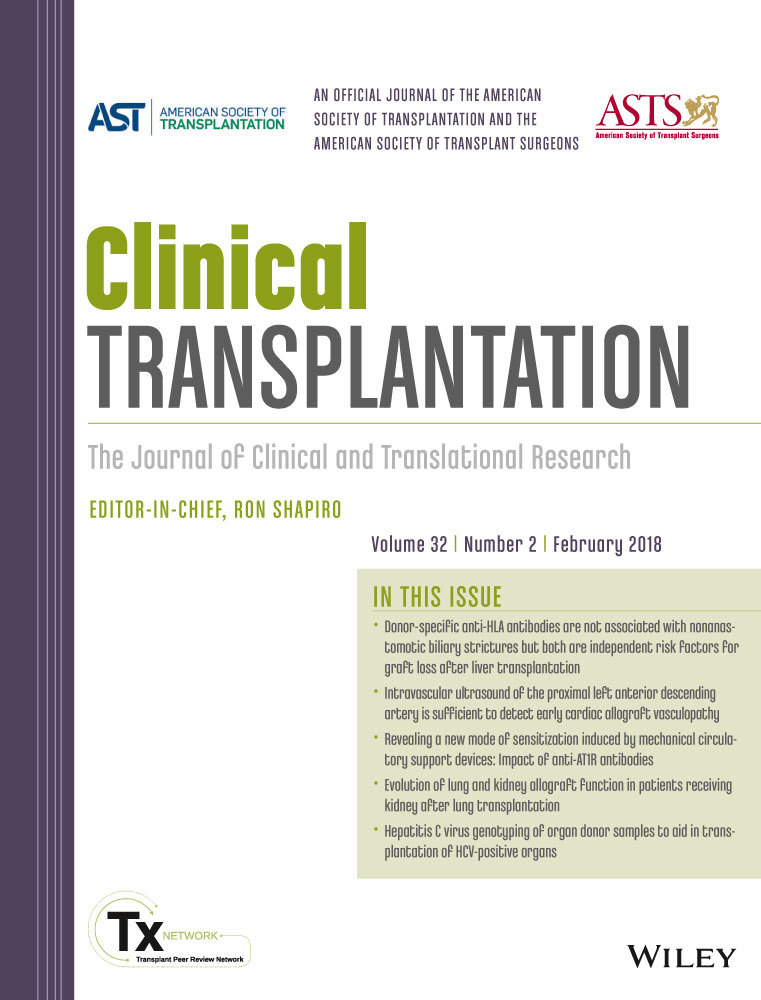Experience with leflunomide as treatment and as secondary prophylaxis for cytomegalovirus infection in lung transplant recipients: A case series and review of the literature
Funding information
This study was partially supported by the Spanish Ministry of Economy and Competitiveness, Instituto de Salud Carlos III (Proyecto Integrado de Excelencia [PIE] 13/00045). J.T.S. holds a research contract from the “Spanish Network for Research in Infectious Diseases” (REIPI). M.F.R. holds a research contract “Juan Rodés” (JR14/00036) from the Spanish Ministry of Economy and Competitiveness, Instituto de Salud Carlos III.
Abstract
Background
Data concerning the use of leflunomide—a drug approved for rheumatoid arthritis with in vitro anticytomegalovirus (CMV) activity—in lung transplant (LT) recipients are scarce.
Aims
To report the use of leflunomide in LT recipients diagnosed with CMV infection/disease.
Material and Methods
We performed a single-center retrospective study including LT recipients who received leflunomide for CMV infection or as secondary prophylaxis after viremia clearance. We also conducted a full systematic PubMed search until June 30, 2017.
Results
We identified 5 LT recipients in our center plus 7 patients reported in the literature. All patients had previously received ganciclovir (GCV) and foscarnet (FOS), with drug-induced adverse effects described in 6 recipients (50%). Antiviral resistance mutations were observed in 8 patients (66.7%). Leflunomide was prescribed for CMV infection in 9 of 12 patients (75%) and as secondary prophylaxis in 3 patients (25%). Initial decrease of CMV viremia after starting leflunomide was observed in 7 of 9 recipients (77.7%), although this response was only transient in 2 patients. Long-term suppression of CMV viremia was reported in 7 of 12 patients (58.3%). In 3 recipients (25%), leflunomide was discontinued due to adverse effects.
Discussion
Our study has some limitations, such as the small number of patients included, its retrospective nature, and absence of leflunomide drug monitoring in serum. Notwithstanding, in our experience, leflunomide proved to be particularly effective as an anti-CMV secondary prophylaxis treatment and for clearing low-grade viremia. Moreover, leflunomide combined with a short course of GCV or intravitreal FOS also proved to be very effective in some patients.
Conclusion
Leflunomide, alone or in combination, could be an effective treatment in selected LT recipients with GCV-resistant CMV infection and as secondary prophylaxis. Further studies are necessary.




